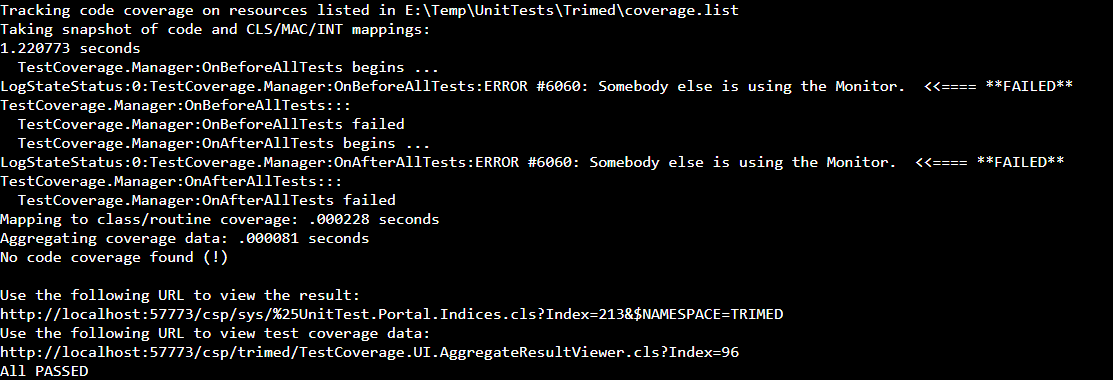When running the command
do ##class(TestCoverage.Manager).RunTest(,"/nodelete",.userParams)
I now get the following error. these tests used to run fine.
LogStateStatus:0:TestCoverage.Manager:OnBeforeAllTests:ERROR #6060: Somebody else is using the Monitor. <<==== **FAILED**

Can someone please point me in the right direction?

.png)